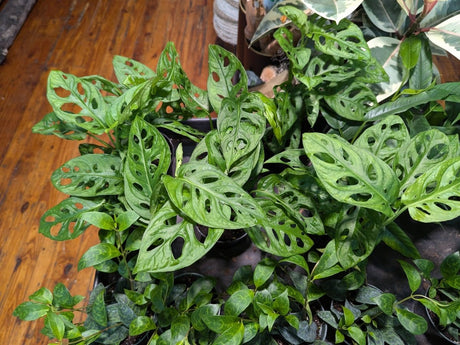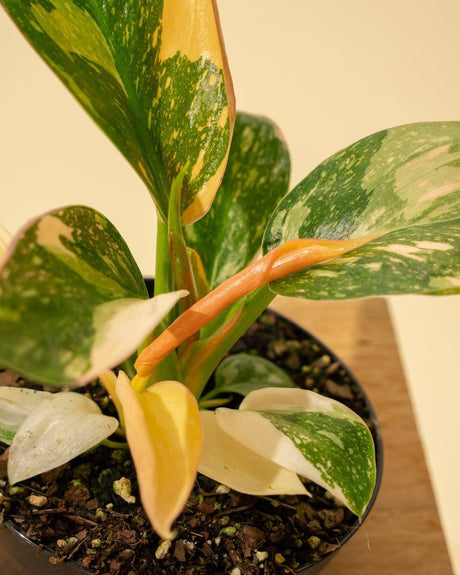Rubber plants, also known as Ficus Elastica, are beloved houseplants due to their attractive foliage and robust nature. If you’re looking to expand your indoor garden, learning how to propagate a rubber plant is a rewarding and straightforward process. In this guide, we will cover seven simple steps to help you propagate your rubber plant successfully.
Understanding Rubber Plant Propagation
Propagation is the process of creating new plants from existing ones. For rubber plants, the most common methods are stem cuttings and air layering. Both techniques can produce healthy new plants, but stem cuttings are usually quicker and easier for beginners.
Understanding these methods will help you decide which is best for your situation. Each method has its advantages, depending on your experience level and the resources available to you. This guide will provide an overview of both approaches to help you succeed.
Choosing the Right Time to Propagate
Timing is key when propagating rubber plants. The best time to propagate is during the growing season, typically from late spring to early summer. During this period, the plant is actively growing, and new cuttings have the best chance of rooting successfully.
Avoid attempting propagation during the dormant winter months for better results. Propagation during the growing season takes advantage of the plant's natural growth cycle, making it easier for the cuttings to develop roots.
Selecting the Ideal Cutting
Choosing the right stem cutting is important for successful propagation. Look for a healthy, mature stem with at least two to three leaves. The cutting should be about 4-6 inches long. Avoid using stems that are too young or too old, as they may not root well. A balanced, healthy stem is more likely to thrive.

Preparing the Cutting
Once you’ve selected the perfect stem, it’s time to prepare it for rooting. Use a clean, sharp knife or pruning shears to make a clean cut just below a node (the point where a leaf attaches to the stem). Remove the lower leaves, leaving one or two at the top. This reduces moisture loss and helps the cutting focus its energy on root development. Clean cuts prevent disease and promote healthier growth.
Rooting Hormone (Optional)
Using a rooting hormone can increase the chances of successful rooting, though it’s not strictly necessary. Dip the cut end of the stem into the rooting hormone powder, tapping off any excess. This helps stimulate root growth and can speed up the propagation process. Rooting hormone is readily available at garden centers and online.
Planting the Cutting
Fill a small pot with a well-draining potting mix, ideally a blend designed for succulents or cacti. Make a small hole in the soil and insert the cutting, ensuring that the node is buried. Firm the soil around the cutting to provide support and water lightly to settle the soil. Proper support and moisture are critical at this stage.

Creating the Ideal Environment
Creating a favorable environment is key to successful propagation. Place the pot in a warm, bright location with indirect sunlight. To maintain humidity, cover the pot with a plastic bag or a clear plastic dome. This creates a mini-greenhouse effect, helping the cutting retain moisture and encouraging root growth. Make sure to air out the setup daily to prevent mold and rot. Monitor the soil moisture, keeping it slightly damp but not soggy. Overwatering can lead to root rot, so it’s crucial to strike the right balance.
Patience and Care
Propagation requires patience. It can take several weeks for roots to develop. During this period, continue to provide optimal conditions and check for signs of new growth. When new leaves start to appear, it’s a sign that the cutting has successfully rooted and is ready for transplanting. Regular observation and gentle care are vital for success.
Transplanting the New Plant
Once the new plant is well-established and has developed a robust root system, it’s time to transplant it into a larger pot. Choose a pot that is one size larger and fill it with a similar well-draining soil mix. Gently remove the young plant from its initial pot, taking care not to damage the new roots. Place it in the new pot and fill in around it with soil, then water lightly.
Transplanting allows the plant more room to grow and thrive. Make sure the new pot has good drainage to prevent waterlogging. After transplanting, monitor the plant for any signs of stress and keep it in a bright, indirect light location. This careful attention helps the plant adjust to its new environment and continue healthy growth.

Long-Term Care Tips
After transplanting, continue to care for your new rubber plant by providing it with the right conditions. Rubber plants thrive in bright, indirect light and prefer to dry out slightly between waterings. Over time, you may need to prune the plant to maintain its shape and encourage bushier growth. Regularly wipe the leaves with a damp cloth to remove dust and keep them looking their best. Consistent care ensures your plant remains healthy and attractive.
Troubleshooting Common Issues
Propagation can sometimes present challenges. If your cutting isn’t rooting, check the following:
- Light: Ensure it’s getting enough bright, indirect light.
- Humidity: Maintain high humidity with a plastic cover or frequent misting.
- Soil Moisture: Avoid overwatering; the soil should be moist but not waterlogged.
- Temperature: Keep the cutting in a warm environment, ideally between 70-75°F (21-24°C).
By addressing these factors, you can often resolve issues and get your propagation back on track.
Successfully Propagating Your Rubber Plant
Propagating your rubber plant can be a fulfilling way to expand your indoor garden. The best time to propagate is during the growing season. Select healthy stems for your cuttings and create an optimal rooting environment. Be patient, as it can take several weeks for new roots to develop. With consistent care, your new plants will flourish and become healthy additions to your home.
Ready to start propagating your rubber plant? Follow this guide to create new plants from stem cuttings, perfect for both beginners and experienced gardeners. Remember to choose the right time, select healthy cuttings, and maintain an ideal environment for rooting. Visit us at Ed's Plant Shop for high-quality plants and expert advice to support your gardening success. Explore our collection to make your gardening journey enjoyable and smooth.
If you need help, contact us and we'll assist you in bringing more greenery into your home!
















